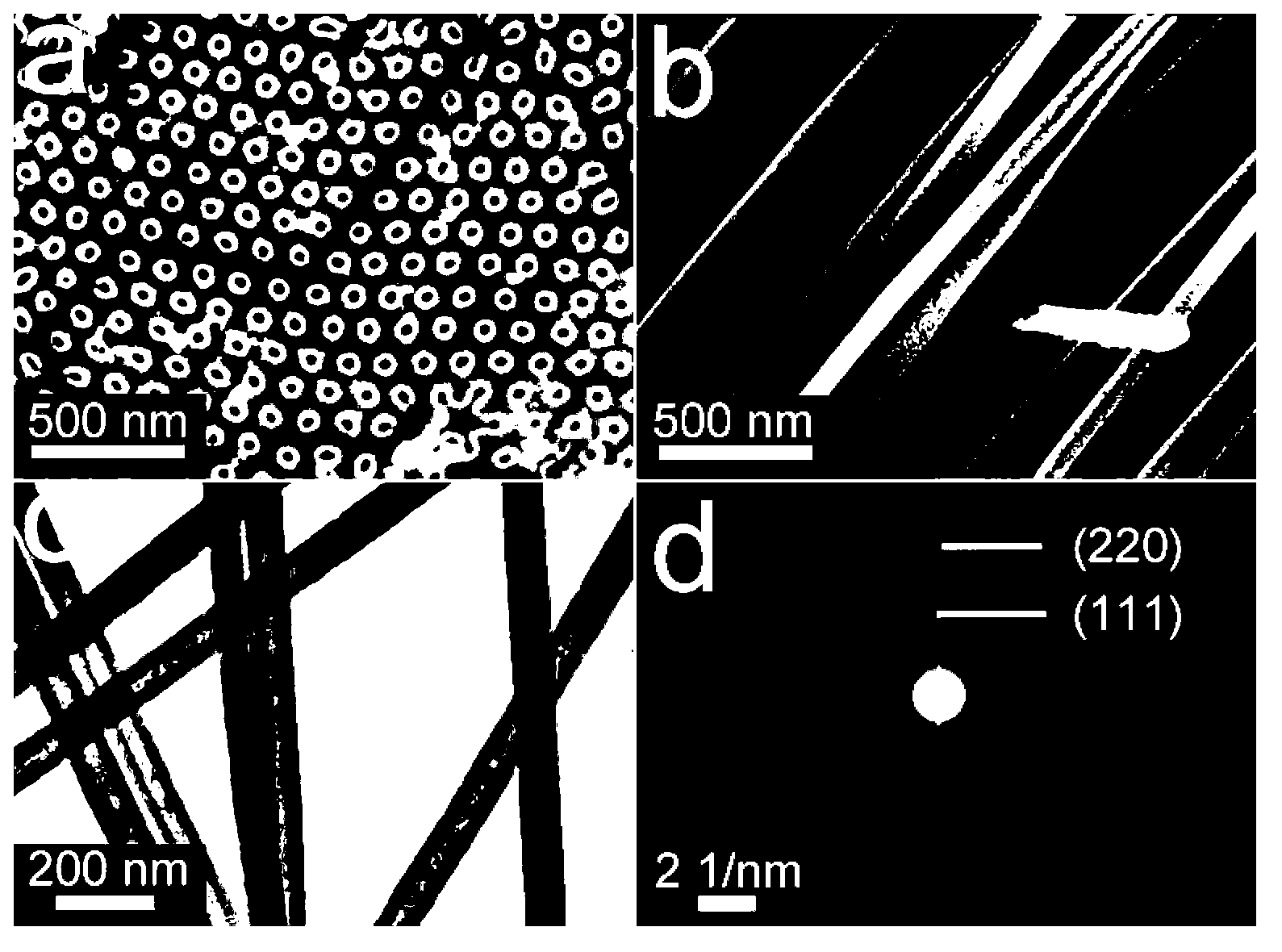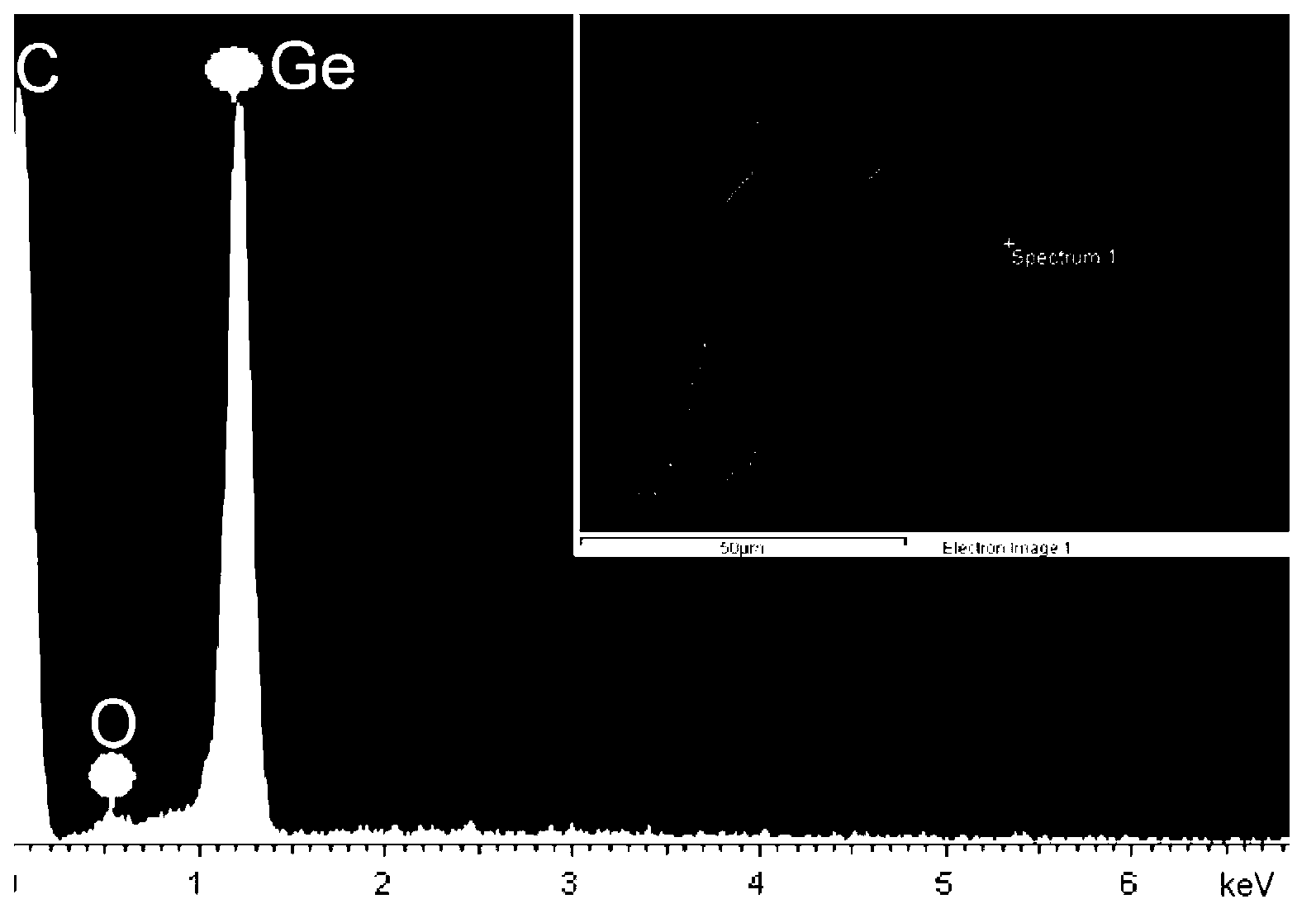Method for preparing germanium nanotubes
A technology of nanotubes and germane, which is applied in the field of preparation of nanotubes, can solve the problems of complex processes, energy consumption, and time-consuming, and achieve the effects of simple and convenient processes, scientific preparation methods, and easy implementation
- Summary
- Abstract
- Description
- Claims
- Application Information
AI Technical Summary
Problems solved by technology
Method used
Image
Examples
Embodiment 1
[0020] The concrete steps of preparation are:
[0021] In step 1, a through-hole alumina template with a pore diameter of 80 nm is firstly obtained by a secondary anodic oxidation method. Put the through-hole alumina template into the nickel nitrate aqueous solution with a concentration of 100g / L and soak for 60min, then use deionized water to rinse the surface of the through-hole alumina template to remove the nickel nitrate on the surface, and obtain the nickel nitrate in the hole. through-hole alumina stencil.
[0022] Step 2, first place the through-hole alumina template with nickel nitrate in the hole in a hydrogen-argon mixed atmosphere, and perform a reduction reaction at 300°C for 30 minutes; wherein, the heating rate to the reduction reaction temperature is 10°C / min. Then it was placed in a germane-hydrogen-argon mixed atmosphere, and vapor deposition was performed at 300° C. for 30 min; wherein, the germane, hydrogen and argon flow ratio in the germane-hydrogen-argo...
Embodiment 2
[0025] The concrete steps of preparation are:
[0026]In step 1, a through-hole alumina template with a pore diameter of 120 nm is firstly obtained by a secondary anodic oxidation method. Put the through-hole alumina template into the nickel nitrate aqueous solution with a concentration of 150g / L and soak for 53min, then use deionized water to rinse the surface of the through-hole alumina template to remove the nickel nitrate on the surface, and obtain the nickel nitrate in the hole. through-hole alumina stencil.
[0027] Step 2, first place the through-hole alumina template with nickel nitrate in the hole in a hydrogen-argon mixed atmosphere, and perform a reduction reaction at 320°C for 25 minutes; wherein, the heating rate to the reduction reaction temperature is 10°C / min. Then it was placed in a germane-hydrogen-argon mixed atmosphere, and vapor-phase deposited at 320°C for 25 minutes; wherein, the flow ratio of germane, hydrogen and argon in the germane-hydrogen-argon mi...
Embodiment 3
[0030] The concrete steps of preparation are:
[0031] In step 1, a through-hole alumina template with a pore diameter of 165 nm is firstly obtained by a secondary anodic oxidation method. Put the through-hole alumina template into the nickel nitrate aqueous solution with a concentration of 200g / L and soak for 45min, then use deionized water to rinse the surface of the through-hole alumina template to remove the nickel nitrate on the surface, and obtain the nickel nitrate in the hole. through-hole alumina stencil.
[0032] Step 2, first place the through-hole alumina template with nickel nitrate in the hole in a mixed atmosphere of hydrogen and argon, and perform a reduction reaction at 340°C for 20 minutes; wherein, the heating rate to the reduction reaction temperature is 10°C / min. Then it was placed in a germane-hydrogen-argon mixed atmosphere, and vapor deposition was performed at 340° C. for 20 min; wherein, the germane, hydrogen and argon flow ratio in the germane-hydro...
PUM
| Property | Measurement | Unit |
|---|---|---|
| diameter | aaaaa | aaaaa |
| verticality | aaaaa | aaaaa |
| pore size | aaaaa | aaaaa |
Abstract
Description
Claims
Application Information
 Login to View More
Login to View More - R&D
- Intellectual Property
- Life Sciences
- Materials
- Tech Scout
- Unparalleled Data Quality
- Higher Quality Content
- 60% Fewer Hallucinations
Browse by: Latest US Patents, China's latest patents, Technical Efficacy Thesaurus, Application Domain, Technology Topic, Popular Technical Reports.
© 2025 PatSnap. All rights reserved.Legal|Privacy policy|Modern Slavery Act Transparency Statement|Sitemap|About US| Contact US: help@patsnap.com


